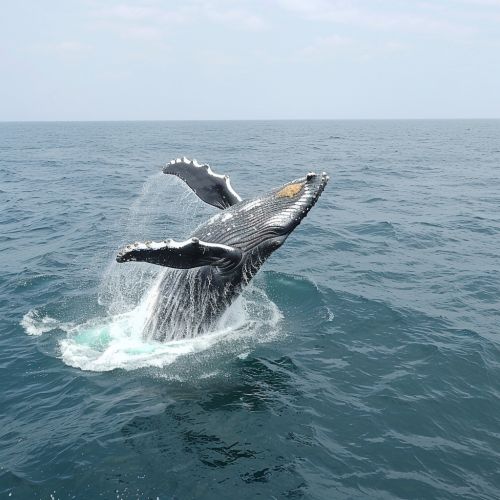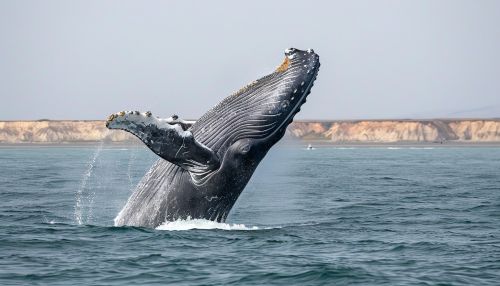Gray whale
Taxonomy and Evolution
The gray whale (Eschrichtius robustus), also known as the grey whale, gray back whale, Pacific gray whale, or California gray whale, is a baleen whale that migrates between feeding and breeding grounds yearly. It is a member of the family Eschrichtiidae, which contains only one other species, the now-extinct Atlantic gray whale (Eschrichtius gibbosus). The gray whale is classified under the order Cetaceans, which includes all species of whales, dolphins, and porpoises.


The gray whale's evolutionary lineage is not fully understood. It is believed to have diverged from its closest relatives, the rorquals, around 30 million years ago. Some paleontologists suggest that the gray whale's ancestors may have been suction feeders, which could explain the species' unique feeding behavior.
Description
Gray whales are known for their distinctive gray coloration, which is caused by a combination of dark skin and light patterns of barnacles and lice. Adult gray whales typically measure between 13 and 15 meters in length, with females being slightly larger than males. The average weight of an adult gray whale is approximately 30,000 kilograms.
The gray whale's body is streamlined and fusiform (spindle-shaped), with a small dorsal hump followed by a series of six to twelve knuckles along the dorsal ridge instead of a dorsal fin. The tail flukes, which can measure up to 4 meters in width, have smooth trailing edges.
Distribution and Habitat
Gray whales inhabit the coastal waters of the North Pacific Ocean. Two distinct populations are recognized: the Eastern North Pacific population, which ranges from the Bering and Chukchi Seas to Baja California, Mexico; and the Western North Pacific population, which inhabits areas from Sakhalin Island, Russia, to Kyushu, Japan.
Gray whales prefer shallow waters, particularly when migrating and breeding. They are often seen from shore, making them popular among whale watchers and researchers.
Behavior and Ecology
Gray whales are bottom feeders, primarily consuming small crustaceans known as amphipods, as well as tube worms and other benthic invertebrates. They feed by turning on their sides and sucking up sediment from the sea floor, then filtering out the food through their baleen plates.
The gray whale's migration is one of the longest of any mammal. They travel up to 20,000 kilometers each year between their feeding grounds in the Arctic and their breeding grounds in the lagoons of Baja California.
Gray whales are known for their friendly behavior towards humans. They often approach whale-watching boats and allow themselves to be touched, earning them the nickname "friendly whales".
Conservation Status and Threats
The gray whale is currently listed as Least Concern on the IUCN Red List of Threatened Species. However, the Western North Pacific population is considered critically endangered, with an estimated population of less than 200 individuals.
Historically, gray whales were heavily targeted by commercial whaling, which led to the extinction of the Atlantic gray whale and the near-extinction of the Western North Pacific population. Today, the main threats to gray whales include entanglement in fishing gear, ship strikes, and habitat degradation due to climate change and industrial development.
